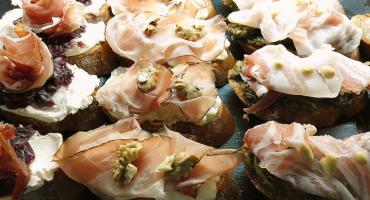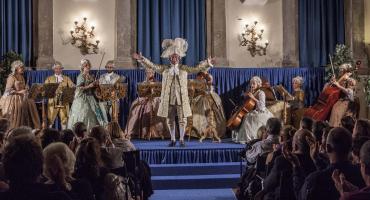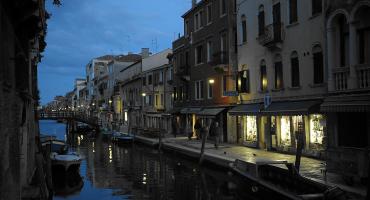Strolling around Venice you can hear many dialects, accent and different languages…Certainly everywhere you go you will hear the colored and sing-song Venice dialect.
Many words used in Venetian dialect identify things that exists just in Venice…
Here’s a dictionary of the most used words in Venetian dialect, that will help you not to get caught unprepared!
Altàna: terrace made up of wooden beams on the houses’ roof
Andàr in grìngola: dress up
Barbacàni: big wooden shelves holding up houses external walls when walls widen towards the center of the street on first floor. Used to enlarge internal space of houses letting the streets free.
Baréne: little mud islands, covered with low flora, submerged by high water
Batèo: vaporetto (public motor boat)
Batipài: who positions wooden poles (brìccole) on the lagoon
Bechèr: butcher
Biavaròl: who sells general food products
Brìccola: big wooden poles or group of poles to delimit lagoon ship canals
Càe: calle, name of the typical street in Venice. In the whole city there is just a real “street”: Strada Nova and two alleys: Via Garibaldi and Via XXII Marzo. All other streets are called calli
Caeghèr: cobbler
Caìgo: deep fog
Campièlo: "campiello" small campo (small square). In Venice there is just one real Square: Saint mark’s Square, all the others are called campi or campielli
Cavàna: water space inside a palace/house in which you enter from a specific gate on the canal. It is used to get off home directly and to moor the boat indoor.
Ciacolàr: chat
Ciapàr la bela: go away in the middle of an embarrassing or delicate situation
Cicchétti: little snacks you can find in taverns to match some glass of wine. There can be beans and onions, meat balls, breaded or fried vegetables or fish, bread and cold cuts with pickled vegetables, small octopus, cornmeal mush, mussels, fried sardine etc…
Copi: roof tiles
Dosàna: heavy stream caused by lowing tide
Favénte: heavy stream caused by growing tide
Féro de pròva: iron bow serving as decoration and reinforcement on gondolas
Fondaménta: street lined by buildings just on one side, on the other side a canal or a water space
Fòntego: fondaco, storehouse or deposit for goods
Fòrcola: support on which lays the oar to row
Fràvo: blacksmith
Frittoìn: who sells deli
Frìtola: sweet pancake with raisin and pine nuts
Ghèbo: narrow canal until the barene (typical Venetian soils) disappearing in the mud
Gòto: glass
Impìrapérle: who strings glass pearls (usually women)
Indoradòr: artisan who put golden leaf on things (normally made of glass)
Lància: private taxi motorboat
Lista: from the term "listoni", white stone bands decorating public pavement (such as the ones in Saint Mark’s Square) and that probably marked the territorial limits of an embassy building. In Venice, just after the railway station, you find a street called Lista di Spagna.
Liston: Saint Mark’s Square is cobbled with big gray sheet decorated with long white marble bands called listoni from which comes the name "fare il listòn" to indicate the strolling in Saint Mark’s Square.
Luganeghèr: delicatessen owner
Marangòn: carpenter
Mascarero: masks artisan
Motonave: big water public vehicle once carrying people from Venice to Murano, Burano, Torcello, Treporti, or from Saint Mark’s Square to Lido
Motoscafo: water public vehicle faster than the vaporetto and which normally makes less stops than it
Nizioleto: (handkerchief) part of the clothing of working-class or middle class women, wore upon the head. Women also wore the zendale (a long shawl originally of cendale or silk taffeta) and used to hide their face wearing the moreta, a small oval black mask, held by a small button on the teeth
Ombra: glass of wine drunk at a tavern. The word, that literally is translated with the word “shadow” perhaps comes from the small stands which sold wine in Saint Mark’s Square, that moved continuously during the day to always stay in the shade of the Saint Mark’s Bell Tower.
Palìna: palo sottile a cui si ormeggiano le barche lungo i canali
Peòci: cozze
Piròn: forchetta
Pistòr: fornaio
Pontìl: zatterone fissato alla riva a cui attraccano i mezzi acquei del servizio pubblico, chiamato anche imbarcadero
Pòpa (o pòpe): poppa
Pòpe: poppa, ma anche gondoliere
Próva: prua
Remèr: artigiano che fabbrica remi e fórcole
Rìo: canale
Rìo terà: calle o altro spazio pedonale ottenuto interrando un canale
Risi e bisi: risotto con i piselli
Rùga: deriva dal francese rue e indica alcune vie abbastanza larghe fiancheggiate da abitazioni e botteghe
Saizàda: denominazione delle prime strade che vennero pavimentate a Venezia con pietre grigie, a forma squadrata (da "saìzo", ossia selce)
Sardèle in saòr: ricetta tradizionale veneziana, realizzata con sarde infarinate e fritte, collocate in una terrina a strati intervallati da abbondante cipolla affettata, cui si aggiungono pinoli e uva passa, condite con molto aceto
Scravasson: pioggia a dirotto
Scùro: imposta in legno
Sestièr: Venezia è divisa in sei zone, quartieri, i sestieri: Cannaregio, Castello, Dorsoduro, Santa Croce, San Marco e San Polo
Sotopòrtego: sottoportico, passaggio pedonale coperto
Squeraròl: costruttore di barche, che lavora nello "squero"
Squèro: cantiere dove si costruiscono o riparano gondole e piccole e medie imbarcazioni in legno usate per navigare in laguna
Stàzio: spazio acqueo dove si ormeggiano le barche, tipicamente le gondole dei traghetti
Traghéto: traghetto. Punto del Canal Grande in cui è possibile passare da una riva all'altra per mezzo di un apposito servizio di gondole
Vaporéto: vaporetto. Mezzo acqueo di trasporto pubblico che da Piazzale Roma, percorre tutto il Canal Grande, fino al Lido
Vèlme: affioramenti di fango sommersi ad ogni ciclo di alta marea
Véra da pozzo: parte esterna in marmo che ricopre un pozzo
Vogàr alla valesàna: voga individuale con due remi incrociati



